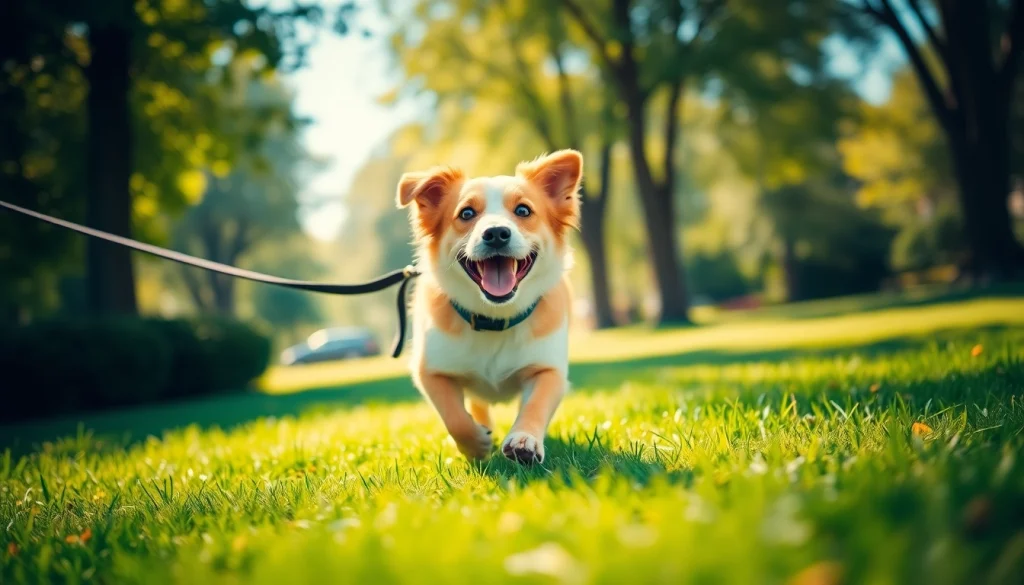
Understanding the Importance of Leashing Your Dog
Walking your dog is one of the most essential activities you can do to keep them healthy and happy. A crucial aspect of this practice is ensuring that your dog is leashed. A dog with leash not only complies with local regulations in many areas, but also promotes safety for both your pet and those around you. In this comprehensive guide, we will explore why leashing your dog is vital, covering safety factors, legal requirements, and the training benefits involved.
1. Safety Aspects of Using a Leash
Leashing a dog is not just about following the rules; it is primarily about ensuring safety. A leash acts as a protective barrier, keeping your dog close by and reducing the risk of accidents. Here’s why safety is paramount:
- Preventing Accidents: A leash helps you prevent your dog from darting into the street unexpectedly or approaching aggressive animals. This reduces the chances of accidents significantly.
- Protecting Other Animals: Leashed dogs are less likely to instigate fights or cause disturbances with other dogs or wildlife, preserving peace in shared spaces.
- Enhanced Control: Using a leash gives you control over unexpected actions from your dog, especially in unfamiliar environments.
2. Legal Requirements for Dog Leashing
In numerous jurisdictions, leashing is not merely a matter of personal choice; it is a legal requirement. Understanding local laws can protect you from fines and legal issues. Here are some legalities to consider:
- Local Ordinances: Many cities have strict ordinances mandating dogs to be on leash in public areas, such as parks and streets.
- Liability Concerns: When your dog is off-leash and causes harm or an accident, you could face liability for the consequences.
- Specific Regulations: Certain breeds may require additional regulations under local laws, so always check the specifics in your area.
3. Benefits of Leashing Your Dog for Training
Using a leash provides an excellent opportunity to train your dog. Here’s how:
- Behavior Management: A leash encourages proper behavior in various environments, helping your dog learn to stay close and follow basic commands.
- Socialization Skills: Walking on a leash helps your dog develop social skills by encountering other dogs and humans safely.
- Building a Bond: Training with a leash fosters a deeper connection between you and your dog, as it allows for consistent communication and teamwork.
Choosing the Right Leash for Your Dog
Choosing the right leash can significantly enhance your walking experience together. Understanding the different types and features available is essential for making an informed decision.
1. Types of Leashes Available
Here are the most common types of dog leashes, each suited for different situations:
- Standard Leash: Typically 6 feet long and made of nylon or leather, this is the most common type of leash and suitable for everyday use.
- Retractable Leash: Allows dogs to roam more freely within a limited distance. However, it requires careful management to prevent tangles and accidents.
- Training Leash: A longer option, often reaching up to 30 feet, allowing for more space during training sessions.
- Hands-Free Leash: Often clipped around your waist, allowing for a more comfortable walking experience while keeping your hands free.
2. Selecting the Right Length and Material
The length and material of your dog leash are crucial for ensuring comfort and safety. Consider the following:
- Length: Standard lengths are usually best for city walking, while longer leashes are ideal for parks and open spaces to give your dog more freedom.
- Material: Choose a material that is durable and comfortable. Nylon is lightweight and easy to clean, while leather is sturdy and can be more aesthetically pleasing.
3. Understanding Different Leash Clips
The type of clip on your leash also affects usability:
- Trigger Snap: Common in standard leashes, it secures with a spring mechanism, providing ease of use.
- Bow Snap: Features a rotating design, great for dogs that like to twist on walks.
- Carabiner Clips: Recommended for larger, more energetic dogs due to their strength and reliability.
Techniques for Successful Leash Training
Leash training is crucial for creating enjoyable walking experiences. Here are effective techniques to train your dog:
1. Basic Commands for Leash Training
Teaching basic commands is foundational for leash training. Commands such as “heel,” “sit,” and “stay” can be vital:
- Heel: Teach your dog to stay close to your side, maintaining pace with you during walks.
- Sit: A good command to enforce calmness as you prepare to walk.
- Stay: Useful for preventing your dog from rushing ahead or becoming overly excited.
2. Overcoming Pulling and Distractions
Many dogs are prone to pulling on the leash or getting distracted. Strategies to manage these issues include:
- Stop and Stand Still: When your dog pulls, stop walking. This teaches them that pulling does not yield progress.
- Correct Direction: If your dog pulls towards a distraction, gently redirect them using a treat and reinforce focusing on you.
3. Positive Reinforcement Strategies
Utilizing positive reinforcement makes leash training more effective and enjoyable:
- Treats: Reward your dog with treats for following commands and walking calmly.
- Verbal Praise: Use a happy tone to encourage your dog—positive words can motivate them significantly.
Common Challenges When Using a Leash
Even with training, issues can arise when walking your dog on a leash:
1. Dealing with Aggressive Reactions
Sometimes, dogs may react aggressively towards other animals or people. Managing this challenge requires:
- Distance: If you see another dog approaching, increase the distance and redirect your dog’s attention.
- Desensitization: Gradually expose your dog to triggers at a distance, rewarding calm behavior before gradually decreasing the space.
2. Navigating Crowded Areas
Walking in crowded spaces can be overwhelming for both you and your dog. Here are strategies to help:
- Practice “Leave It”: Teach your dog to ignore distractions during crowded walks.
- Choose Off-Peak Times: If possible, walk during less busy hours to minimize stress on your dog.
3. Managing Multiple Dogs on Leashes
Handling multiple dogs can be challenging, but with the right techniques, it can be a smooth experience:
- Train Together: Teach all dogs basic commands and ensure they can walk harmoniously side by side.
- Spacing: Keep a safe distance between the dogs to prevent them from tangling or becoming agitated with each other.
Enhancing Your Dog Walking Experience
Walking your dog should be enjoyable for both you and your furry friend. Here are ways to enhance your outings:
1. Planning Your Route for Enjoyment
Selecting the right route can make a huge difference. Consider parks, scenic areas, or trails where both you and your dog can enjoy natural surroundings:
- Avoiding Busy Roads: Choose quieter areas to help create a less stressful environment.
- Discover New Paths: Explore nearby trails or parks to keep walks fresh and exciting.
2. Engaging Your Dog During Walks
Keeping your dog engaged can enhance their experience. Activities can include:
- Sniff Breaks: Allow time for your dog to explore different scents. This is crucial for their mental stimulation.
- Playtime: Incorporate games like fetch or tug-of-war during breaks in your walk.
3. Evaluating Your Dog’s Behavior While on a Leash
Monitoring your dog’s behavior is vital for a successful walking experience:
- Recognizing Signs of Stress: If your dog shows signs of anxiety or stress, it’s critical to modify your approach, be it your pace or route choice.
- Adjusting Training Techniques: Be flexible with your training strategies as needed, and maintain patience while reinforcing positive behaviors.





